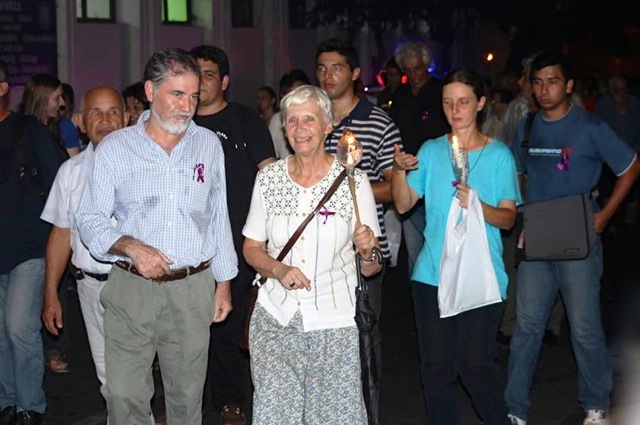… to introduce the People of the Paraguayan Land
Welcome, dear Pope Francis, to this beautiful guaraní land, inhabited by a multicultural and multi-ethnic population with deep human values but who, especially the “children of the land,” suffer from systemic impoverishment. I would like to introduce them to you in three different facets:
1. This land was first populated by peoples who today scarcely number 120,000 — the so-called indigenous peoples, in twenty diverse groups with different cultures and histories, who now make up 2% of the Paraguayan population. Until comparatively recently (1945), these lands were covered by 8M hectares of forest, where the peoples were free to live in interdependent and reciprocal relationships amongst themselves and with the natural world.
Today, however, indigenous communities are like ghettos, isolated and blocked off. Many indigenous families are forced to abandon their ancestral lands and to move to the cities where they are not welcome. The few shamans who survive continue to pray for us from within the forests; they are saddened and devastated because we, the white people, “don’t know how to live or coexist with sacred ground.”
2. When the first Spaniards came 500 years ago to colonize our Paraguayan land, they learned from those who spoke guaraní how to work the land and to plant according to an agri-cosmic calendar. They also adopted some basic indigenous principles founded on jopoi (reciprocity), potyró (working communally), and aty guazú (assemblies). This was how the Paraguayan peasant farming life came into being, with its profound values of contemplation and wisdom, purified and renewed in a constant struggle against droughts, fires, plagues, floods, thefts, and evictions.
Today, however, many peasant farmers are without land, and 80% of the fertile land is in the hands of 2% of the population. These suffering landless peasants have a story to tell, and they beg to be listened to.
3. The great majority of the people, the Bañados, who live along the shores of the River Paraguay, in the periphery of the capital-city, are former peasant farmers and indigenous groups who have been forced for different reasons to abandon their lands. Hoping for a new life in the city, they have learned that they are not valued and nobody is interested in their knowledge and experience of working the land. Many of them scrape an existence from the municipal rubbish, others on the docks, or fishing. But it is mainly the women, many of them heads of families, who support the household through their work as domestics in the wealthy neighborhoods.
Today, however, the Bañados are threatened with eviction from these untitled lands. Through tremendous sacrifice, they have turned these once uninhabited shores into livable areas and together they have constructed a new Bañados culture. But once again, their pursuit for land continues.
These three groups: indigenous peoples, peasant farmers, and the Bañados,
form the “people of the land”
and they are at the heart of the Paraguayan people.
Dear Pope Francis, you will find in this Paraguayan “people of the land” the People of God. They bring an irreplaceable contribution to the identity of our people. The aroma and the knowledge of the earth, the joy of being together and working communally, the fruits of their faith in and love for the God of Life and Community from them as one people in diversity. Please hear their voice, as they speak to you in their own language, in guaraní, and as they express to you their soul. They hope that you would come to their land and listen to them. They await your consoling and joy-filled words of encouragement for their untiring struggle for a better life.
I do not wish to be the voice of the voiceless, as the “people of Paraguayan land” have their own voice, their own words. But I assure you that, when you listen to them, you will find yourself at the “heart” of the Paraguayan people.
A warm embrace with the aroma of and the love for the land of Paraguay,
Margot Bremer rscj
Margot Bremer rscj has been living and working in Paraguay for 27 years now. She collaborated with the Jesuits in the Antonio Guasch Center for Paraguayan Studies, and for 20 years she taught at the Institute of the Conference of Religious. At present, she serves as theological adviser in CONAPI (Coordinación Nacional de Pastoral Indígena), a post she has held since 1992; continues her collaboration with the Jesuits through their magazine Acción; and participates in different groups, including AMERINDIA, AELAPI (Articulación ecuménica latinoamericana de Pastoral y Teología India) and CELAM (Conferencia Episcopal latinoamericana) where she contributes in the area of guaraní theology.
Section
|International News
Tags
|Paraguay

